Representation of women leading heart failure research remains limited, according to new research led by Penn Medicine. The authors say the findings point to a need to support great gender diversity among researchers to drive diversity among clinical trial participants and even improve patient outcomes.
Category: Research Results
Hedge fund investors get a raw deal from incentive fees
Investors who put their money in hedge funds may find that the fees are much higher than expected, a new study suggests.
Scientists proposed a new approach to assessing platelet activation risk
Russian researchers have developed a new method for assessing individual risks of intravascular platelet activation. The latter plays a crucial role in the development of various serious clinical situations such as heart attacks and strokes. The range of circumstances that may be associated with the development of intravascular coagulation is currently actively investigated worldwide. In particular, the onset of intravascular coagulation may be triggered by temporary spikes in blood pressure.
NUS study finds that air pollution is a driver of residential electricity demand
A study conducted by Associate Professor Alberto Salvo from the Department of Economics at the National University of Singapore Faculty of Arts and Social Sciences revealed that households respond to ambient air pollution by increasing electricity consumption, which in turn increases the carbon emissions that are co-produced in supplying the electricity.
Live Press Conference: Ocean microbes could interact with pollution to influence climate
A press conference on this topic will be held Tuesday, Aug. 17, at 1 p.m. Eastern time online at www.acs.org/fall2020pressconferences.
Live Press Conference: Immunotherapy extends survival in mouse model of hard-to-treat breast cancer (video)
A press conference on this topic will be held Tuesday, Aug. 17, at 10 a.m. Eastern time online at www.acs.org/fall2020pressconferences.
Live Press Conference: Micro- and nanoplastics detectable in human tissues
A press conference on this topic will be held Tuesday, Aug. 17, at 12 p.m. Eastern time online at www.acs.org/fall2020pressconferences.
Live Press Conference: Negative side effects of opioids could be coming from users’ own immune systems (video)
A press conference on this topic will be held Tuesday, Aug. 17, at 9 a.m. Eastern time online at www.acs.org/fall2020pressconferences.
Stopping tooth decay before it starts — without killing bacteria
Dental plaque can lead to cavities, but scientists are developing a coating they say dentists could someday apply to teeth to prevent plaque from forming. The researchers will present their results today at the American Chemical Society Fall 2020 Virtual Meeting & Expo.
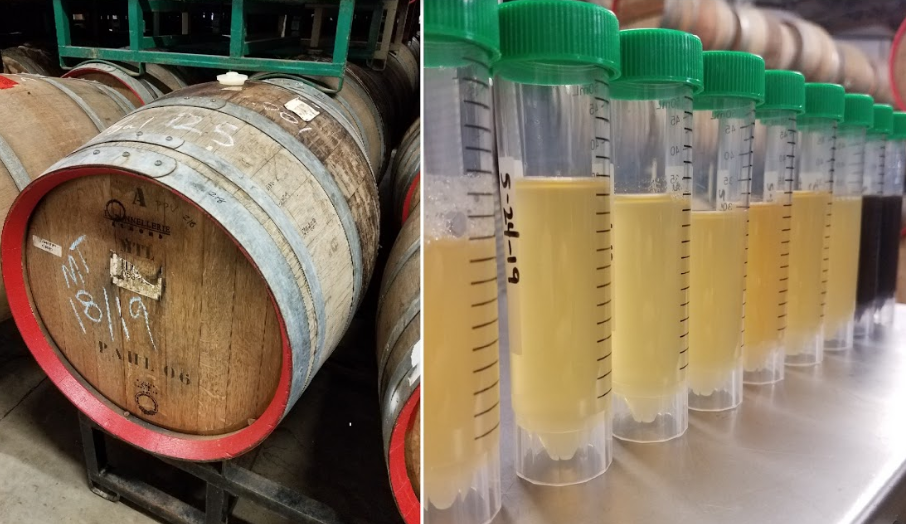
How sour beer gets so… sour (video)
Sour beer has recently surged in popularity in the U.S. Today, scientists report progress on a study of how organic acids and other flavor components in the beverage evolve as it ages. They will present their results at the American Chemical Society Fall 2020 Virtual Meeting & Expo.
Targeting iron uptake to create a new class of antibiotics against UTIs
Researchers report early progress toward developing a new class of antibiotics against urinary tract infections that would starve the causative bacteria of iron. They present their results today at the American Chemical Society Fall 2020 Virtual Meeting & Expo.
More healthful milk chocolate by adding peanut, coffee waste
Milk chocolate is a consumer favorite, but it isn’t exactly health food. Now, researchers report a new way to combine milk chocolate with waste peanut skins to boost its antioxidant properties and present their results today at the American Chemical Society Fall 2020 Virtual Meeting & Expo.
Bio-based communication networks could control cells in the body to treat conditions
Scientists have found a method for electronic devices to communicate with biological cells, paving the way for smart implantable devices. They will present their results today at the American Chemical Society Fall 2020 Virtual Meeting & Expo.
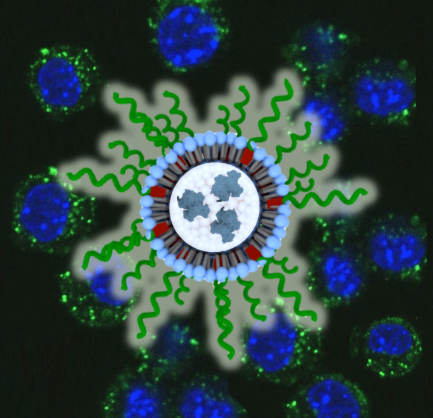
Immunotherapy extends survival in mouse model of hard-to-treat breast cancer (video)
Today, scientists report a new immunotherapy that extends the survival of mice that have triple negative breast tumors, a difficult-to-treat form of cancer. The researchers will present their results at the American Chemical Society Fall 2020 Virtual Meeting & Expo.
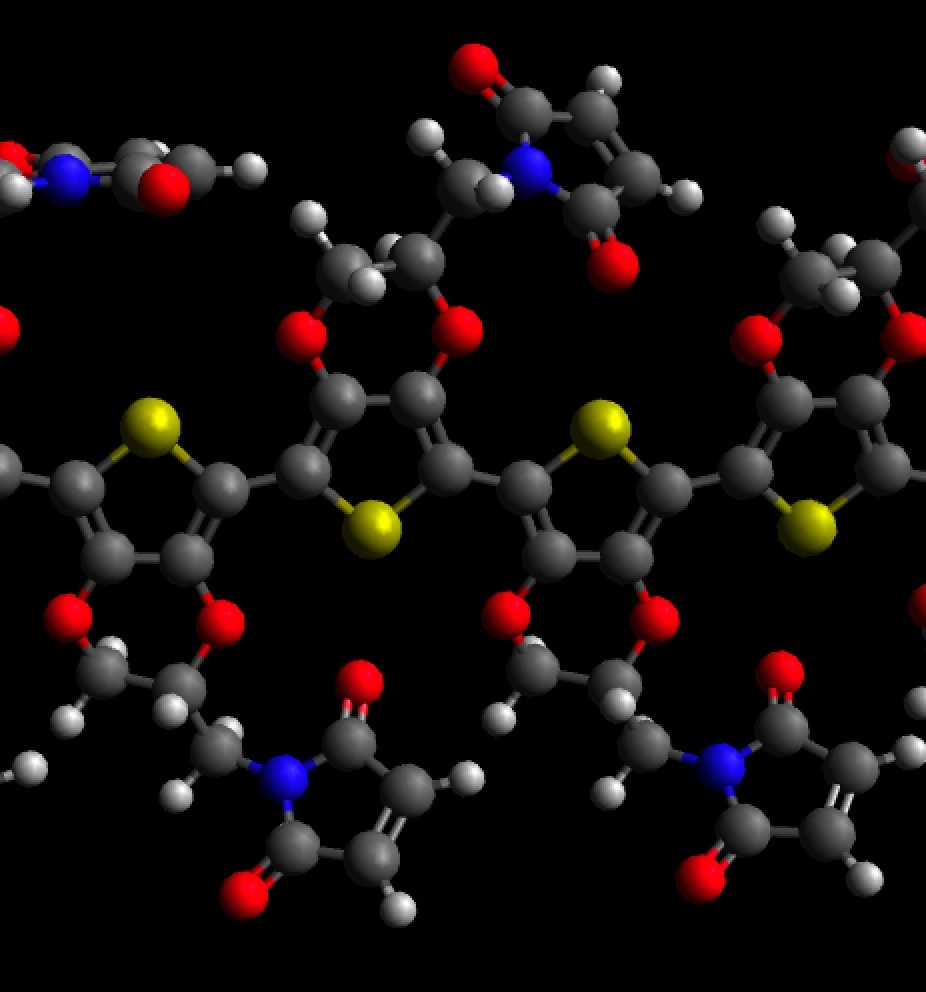
‘Cyborg’ technology could enable new diagnostics, merger of humans and AI
Connecting electronics directly to human tissues in the body is a challenge. Today, a team is reporting new coatings for components that could help them more easily fit into this milieu. The researchers will present their results at the American Chemical Society Fall 2020 Virtual Meeting & Expo.
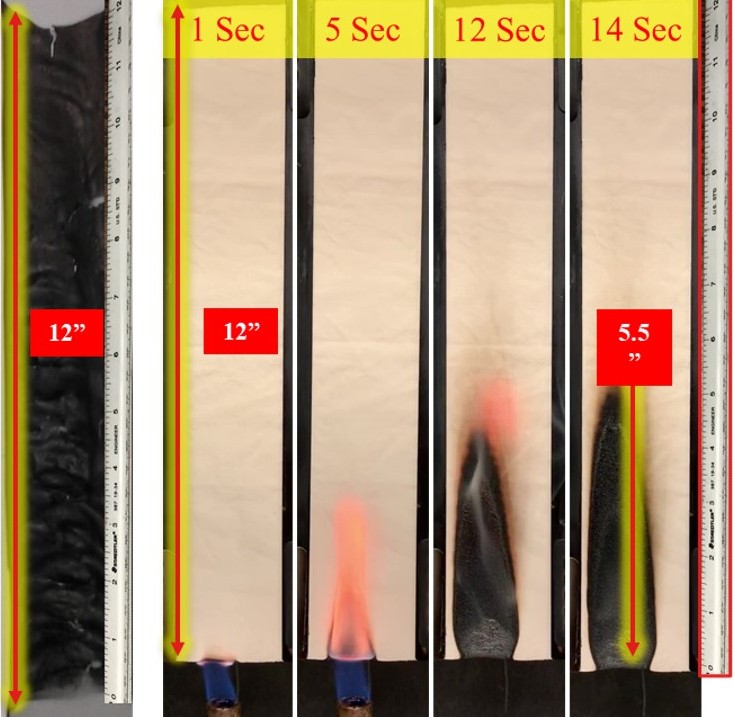
Safer, more comfortable soldier uniforms are in the works
Scientists have developed a novel way of making a fabric used in U.S. Army uniforms flame-retardant and insect repellent, all with nontoxic substances. They will present their results today at the American Chemical Society Fall 2020 Virtual Meeting & Expo.
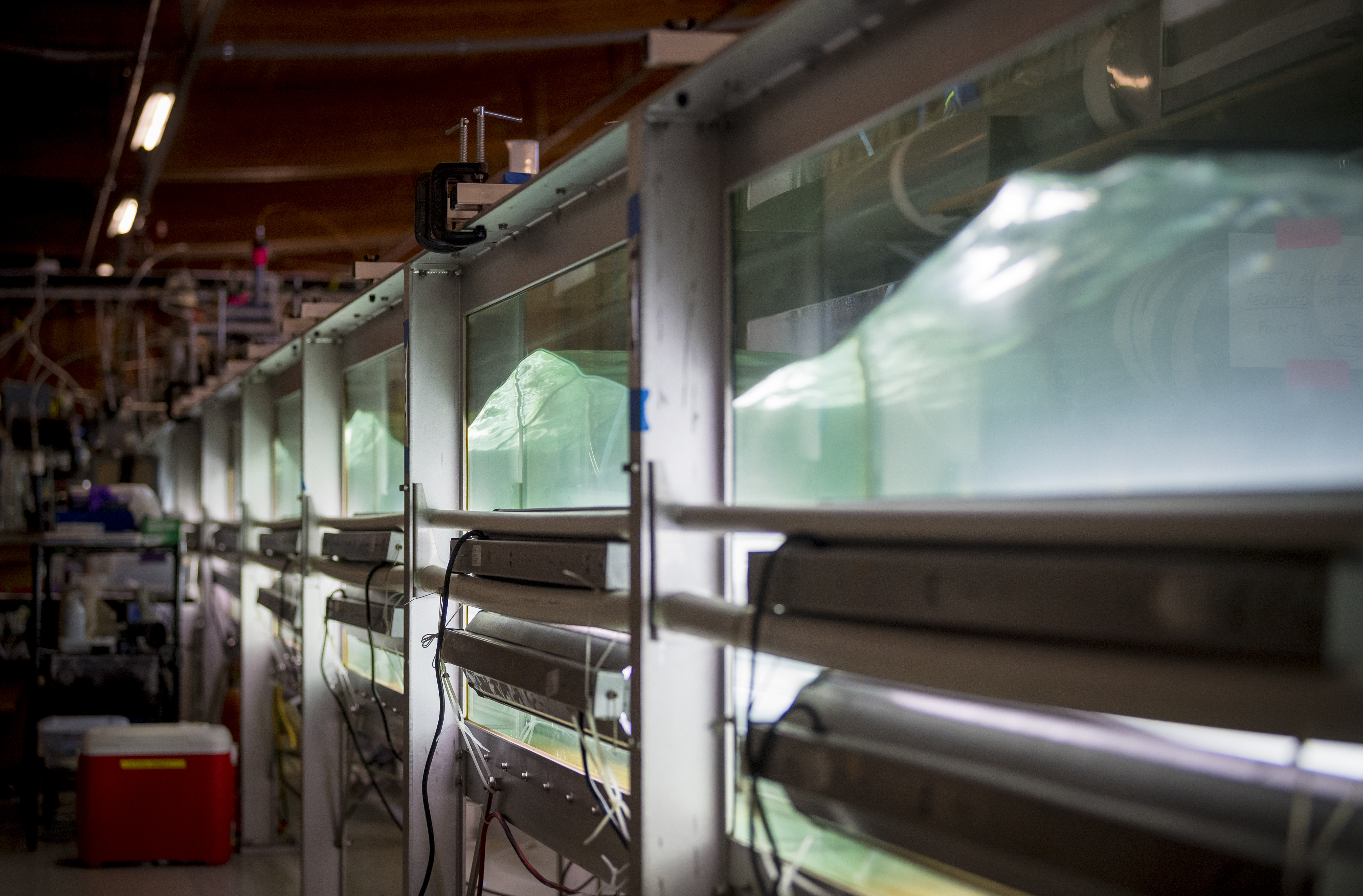
Ocean microbes could interact with pollution to influence climate
Little is known about how ocean microbes affect climate. Now, scientists report that pollution can change molecules released to the atmosphere by ocean microbes. They present their results today at the American Chemical Society Fall 2020 Virtual Meeting & Expo.
Micro- and nanoplastics detectable in human tissues
When plastic breaks down, tiny fragments can get into the environment. Scientists now report that they are among the first to examine micro- and nanoplastics in human organs and tissues. They will present their results today at the American Chemical Society Fall 2020 Virtual Meeting & Expo.
Patients taking long-term opioids produce antibodies against the drugs
University of Wisconsin–Madison scientists have discovered that a majority of back-pain patients they tested who were taking opioid painkillers produced anti-opioid antibodies. These antibodies may contribute to some of the negative side effects of long-term opioid use.
Converting solar energy to hydrogen fuel, with help from photosynthesis
Recently, scientists have achieved record efficiency for solar-to-fuel conversion, and now they want to incorporate the machinery of photosynthesis to push it further. They present their results today at the American Chemical Society Fall 2020 Virtual Meeting & Expo.
Negative side effects of opioids could be coming from users’ own immune systems (video)
Opioid users can develop chronic inflammation and heightened pain sensitivity. These side effects might stem from the body’s own immune system, which can make antibodies against the drugs. The researchers will present their results at the American Chemical Society Fall 2020 Virtual Meeting & Expo.
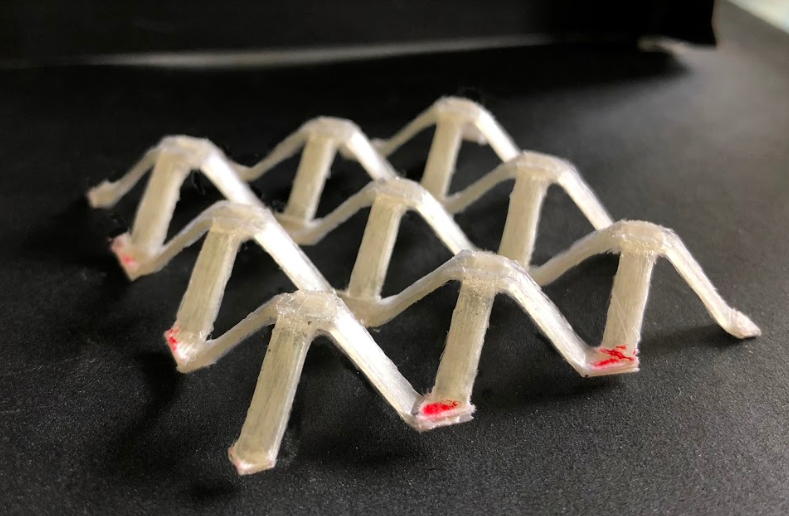
Mixing silk with polymers could lead to better biomedical implants
By combining silk with synthetic compounds, researchers are getting closer to developing implantable composite materials with the best properties of both for biomedical applications. The researchers present their results today at the American Chemical Society Fall 2020 Virtual Meeting & Expo.
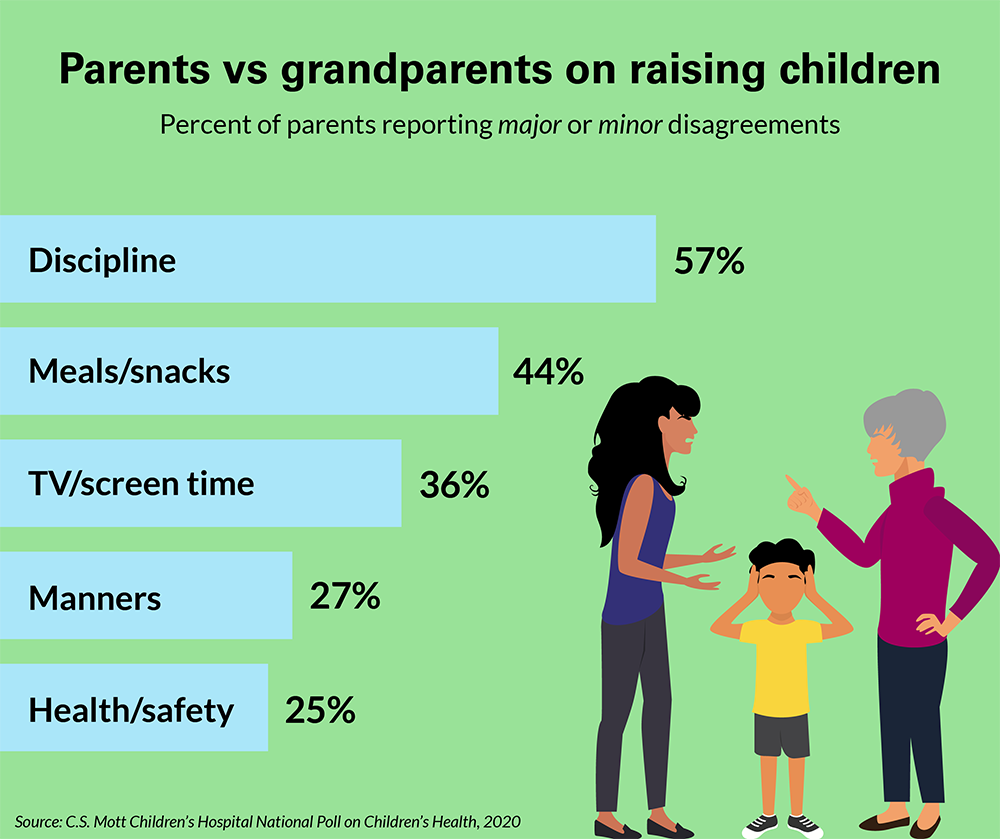
National Poll: Half of Parents Report Butting Heads with Child’s Grandparent Over Parenting
Nearly half of parents describe disagreements with one or more grandparent about parenting choices, with one in seven going so far as to limit the amount of time their child sees certain grandparents.
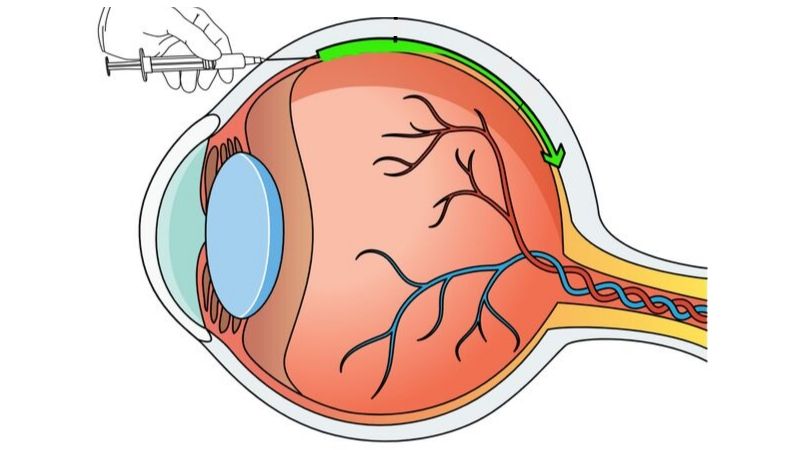
Nanoparticles enhance gene therapies for eye disease
NIBIB-funded researchers have created nanoparticles for successful gene therapy of a mouse model of macular degeneration. The nanoparticle carriers have the potential to significantly expand the effectiveness of gene therapies for human eye diseases, including blindness.
Traces of ancient life tell story of early diversity in marine ecosystems
If you could dive down to the ocean floor nearly 540 million years ago just past the point where waves begin to break, you would find an explosion of life–scores of worm-like animals and other sea creatures tunneling complex holes and structures in the mud and sand–where before the environment had been mostly barren.
Poor hygiene is significant risk for antimicrobial-resistant bacteria colonization
Scientists have found clear indicators for how the interaction of poor hygiene and antibiotic use contribute to the colonization of antimicrobial-resistant (AMR) bacteria in humans, a problem that contributes to hundreds of thousands of deaths annually.
Gaiters do no harm: WVU toxicologists find coverings help contain the spread of exhaled droplets
Experts with the West Virginia University Center for Inhalation Toxicology found that – assuming it’s a good fit – a gaiter will, despite recent reports, provide a respiratory containment of exhaled droplets comparable to a common over-the-ear cloth mask.
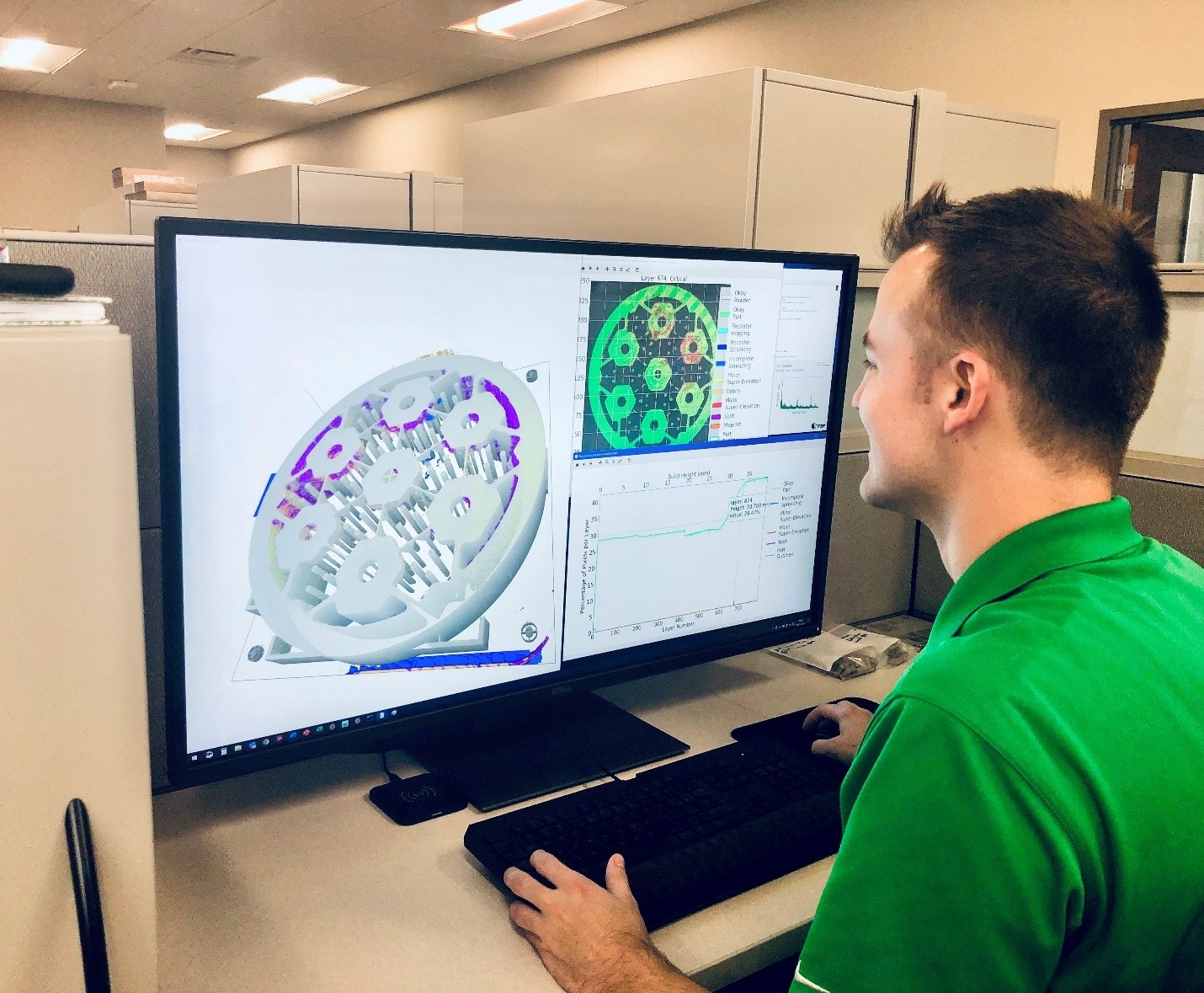
AI software enables real-time 3D printing quality assessment
Oak Ridge National Laboratory researchers have developed artificial intelligence software for powder bed 3D printers that assesses the quality of parts in real time, without the need for expensive characterization equipment.

Is the COVID-19 virus pathogenic because it depletes specific host microRNAs?
Why is the COVID-19 virus deadly, compared to cold-causing coronaviruses? Analysis current literature and bioinformatic study of seven coronaviruses, suggests that SARS-CoV-2 acts as a microRNA “sponge,” leading to better viral replication and blockage of the host immune response.
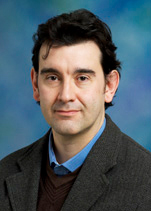
Pregnant mother’s immunity tied to behavioral, emotional challenges for kids with autism
Children with autism born to mothers who had immune conditions during their pregnancy are more likely to have behavioral and emotional problems, a UC Davis Health study has found. Offspring sex may also interact with maternal immune conditions to influence outcomes, particularly in terms of a child’s cognition.

Sea-level rise could make rivers more likely to jump course
Sea-level rise due to climate change is poised to shift the way that rivers naturally chart their path to the shoreline. The nature of that change will depend on both the rate of sea-level rise and the sediment load carried by the river, according to new models by Caltech researchers and their colleagues.

Cardiovascular risk factors tied to COVID-19 complications and death
COVID-19 patients with cardiovascular comorbidities or risk factors are more likely to develop cardiovascular complications while hospitalized, and more likely to die from COVID-19 infection, according to a new study published August 14, 2020 in the open-access journal PLOS ONE by Jolanda Sabatino of Universita degli Studi Magna Graecia di Catanzaro, Italy, and colleagues.

Study shows frequently used serology test may not detect antibodies that could confirm protection against reinfection of COVID-19
Two different types of detectable antibody responses in SARS-CoV-2 (COVID-19) tell very different stories and may indicate ways to enhance public health efforts against the disease, according to researchers at The University of Texas MD Anderson Cancer Center. Antibodies to the SARS-CoV-2 spike protein receptor binding domain (S-RBD) are speculated to neutralize virus infection, while the SARS-CoV-2 nucleocapsid protein (N-protein) antibody may often only indicate exposure to the virus, not protections against reinfection.
USC scientists identify the order of COVID-19’s symptoms
USC researchers have found the likely order in which COVID-19 symptoms first appear: fever, cough, muscle pain, and then nausea, and/or vomiting, and diarrhea.
PARP inhibitor becomes new treatment option for some men with advanced prostate cancer
Results from an international clinical trial found that men with advanced prostate cancer who have mutated BRCA1/BRCA2 genes can be treated successfully with a targeted therapy known as rucaparib.
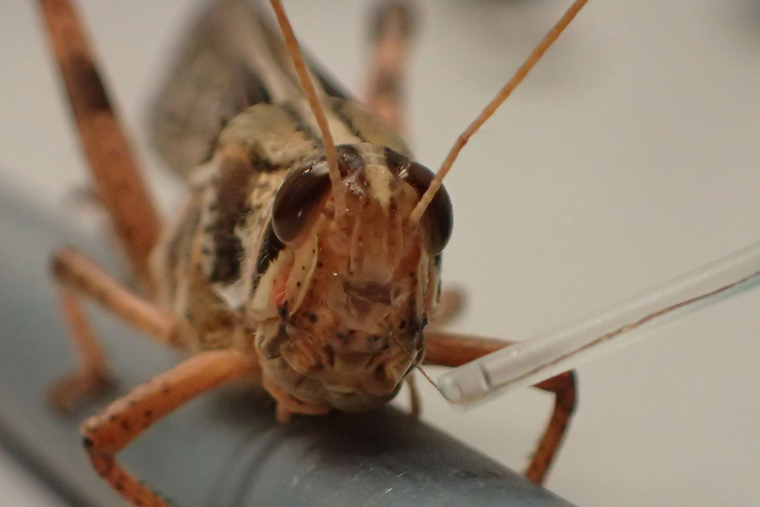
Researchers one step closer to bomb-sniffing cyborg locusts
Research from the McKelvey School of Engineering at Washington University in St. Louis has determined that locusts can smell explosives and determine where the smells originated — an important step in engineering cyborg bomb-sniffing locusts.
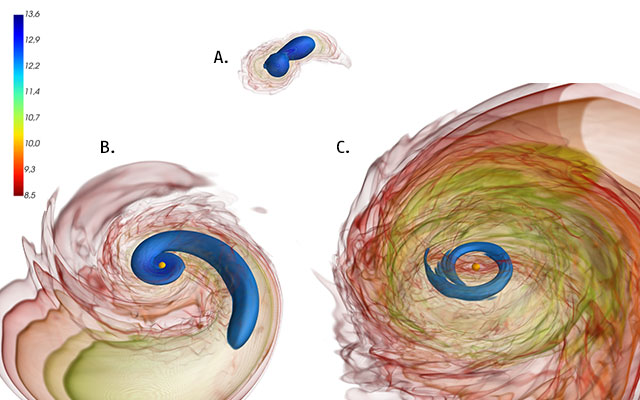
Supercomputers Help Uncover ‘Noisy’ Neutron Star Collisions
A series of simulations using multiple supercomputers, including Comet at the San Diego Supercomputer Center (SDSC) at UC San Diego, suggests that when the neutron stars’ masses are different enough, the result is far noisier. The models predicted an electromagnetic ‘bang,’ which isn’t present when the merging stars’ masses are similar, according to researchers.
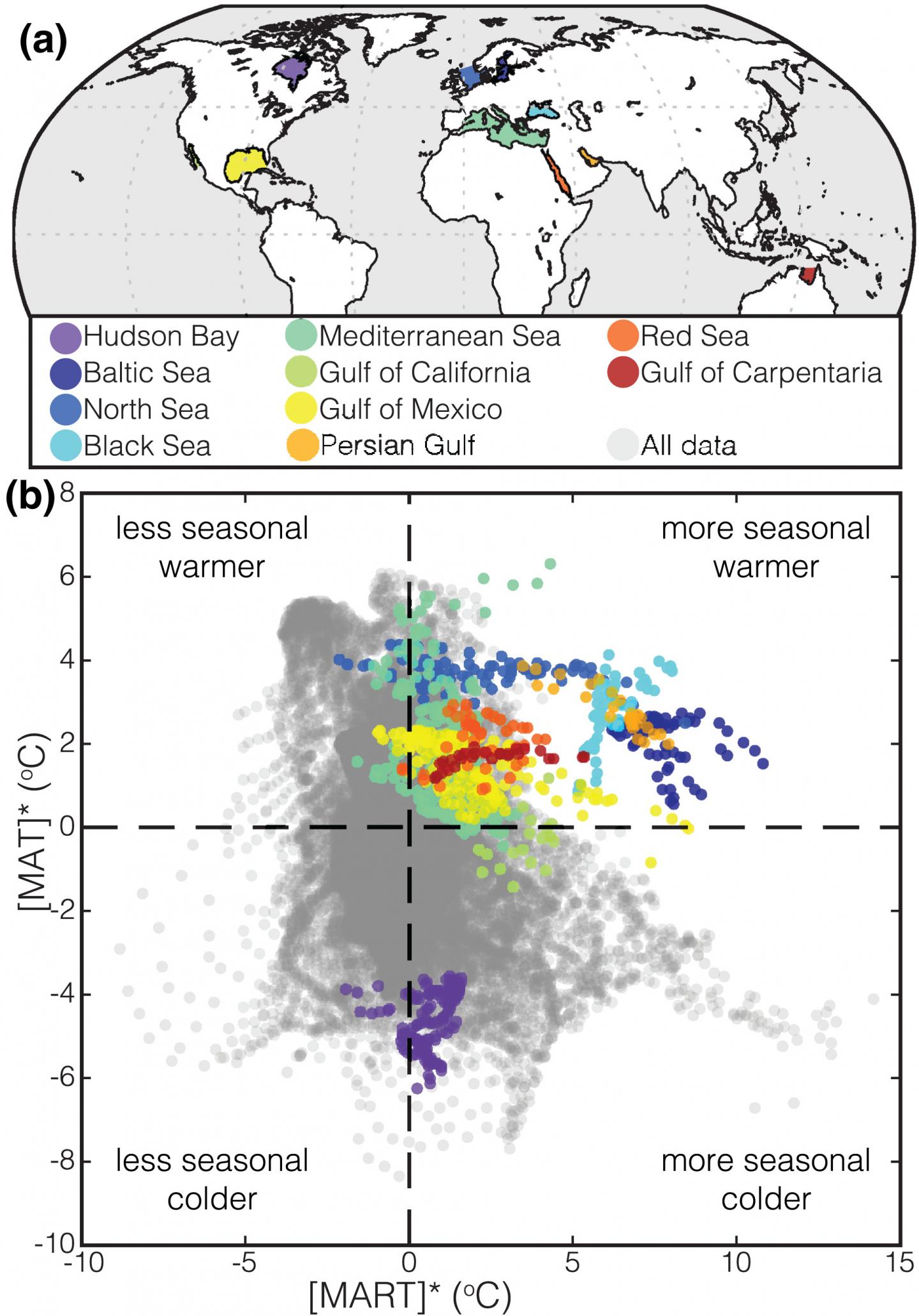
Reconstructing global climate through Earth’s history
A key component when forecasting what the Earth’s climate might look like in the future is the ability to draw on accurate temperature records of the past.
Convalescent Plasma Associated with Reduced COVID-19 Mortality in 35,000-Plus Hospitalized Patients
Mayo Clinic and collaborators have published a preprint that identifies two main signals of efficacy that can inform future clinical trials on plasma therapy on COVID-19 patients. The data are extracted from the Mayo-led national Expanded Access Program (EAP) for convalescent plasma for the treatment of hospitalized patients with COVID-19.

Patients’ Access to Opioid Treatment Cumbersome
The “secret shopper” study used trained actors attempting to get into treatment with an addiction provider in 10 U.S. states. The results, with more than 10,000 unique patients, revealed numerous challenges in scheduling a first-time appointment to receive medications for opioid use disorder, including finding a provider who takes insurance rather than cash.
The Gut Microbiome, CRISPR/Cas-9, and More Featured in August 2020 Toxicological Sciences
The August 2020 issue of Toxicological Sciences includes exciting advances in toxicology research. The edition features pieces on biotransformation, toxicokinetics, and pharmacokinetics; developmental and reproductive toxicology; and more.
Many medical “rainy day” accounts aren’t getting opened or filled, study finds
One-third of the people who could benefit from a special type of savings account to cushion the blow of their health plan deductible aren’t doing so, according to a new study. And even among people who do open a health savings account (HSA), half haven’t put any money into it in the past year.
New phase of nanoconfined water discovered
Researchers at MIPT Laboratory of Terahertz Spectroscopy together with their Russian and international colleagues discovered a new phase of nanoconfined water; separate water molecules that are confined within nanocavities formed by ions of cordierite crystal lattice. The first reliable experimental observation of a phase transition in a network of dipole-dipole coupled water molecules is, in and of itself, an important fundamental breakthrough. But apart from that, the discovered phenomenon can also find practical applications in ferroelectrics, artificial quantum systems, and biocompatible nanoelectronics.
FSU researcher finds links between police searches and race in Minneapolis
By: Mark Blackwell Thomas | Published: August 13, 2020 | 12:46 pm | SHARE: When looking for cities to conduct research on the intersection of police behavior, race and location, James Wright II, an assistant professor of public administration at Florida State University, didn’t have many options. It was 2016 and, at that time, Minneapolis was the only city that had publicly available information about police stops with the detailed, longitudinal and latitudinal information Wright required to plot police stops block by block.

WTF, when will scientists learn to use fewer acronyms?
Have you heard of DNA? It stands for Do Not Abbreviate apparently. Jokes aside, it’s the most widely used acronym in scientific literature in the past 70 years, appearing more than 2.4 million times.

A Shining Example of Nature Leading the Way
From oil refining to automobile pollution-control devices to the bulk of pharmaceuticals, platinum-group metals are the go-to choice for facilitating chemical reactions. It’s been that way for decades. But a new review article in the August 14 issue of the journal Science, led by first author Morris Bullock of Pacific Northwest National Laboratory, provides a road map toward greater use of Earth-abundant metals, which would reduce cost and environmental impact.
Study Uncovers Racial and Ethnic Disparities in Flu Vaccination Rates among U.S. Dialysis Facilities
• Among US patients undergoing dialysis, those visiting dialysis facilities with higher proportions of minorities are less likely to be vaccinated against influenza, and the disparity seems to be increasing.

Scientists identify top ways for NY farms to cut climate emissions
New York agriculture has the capacity to mitigate its own greenhouse gas (GHG) emissions, two Cornell University researchers say in a state-funded report commissioned by the New York State Department of Agriculture and Markets.
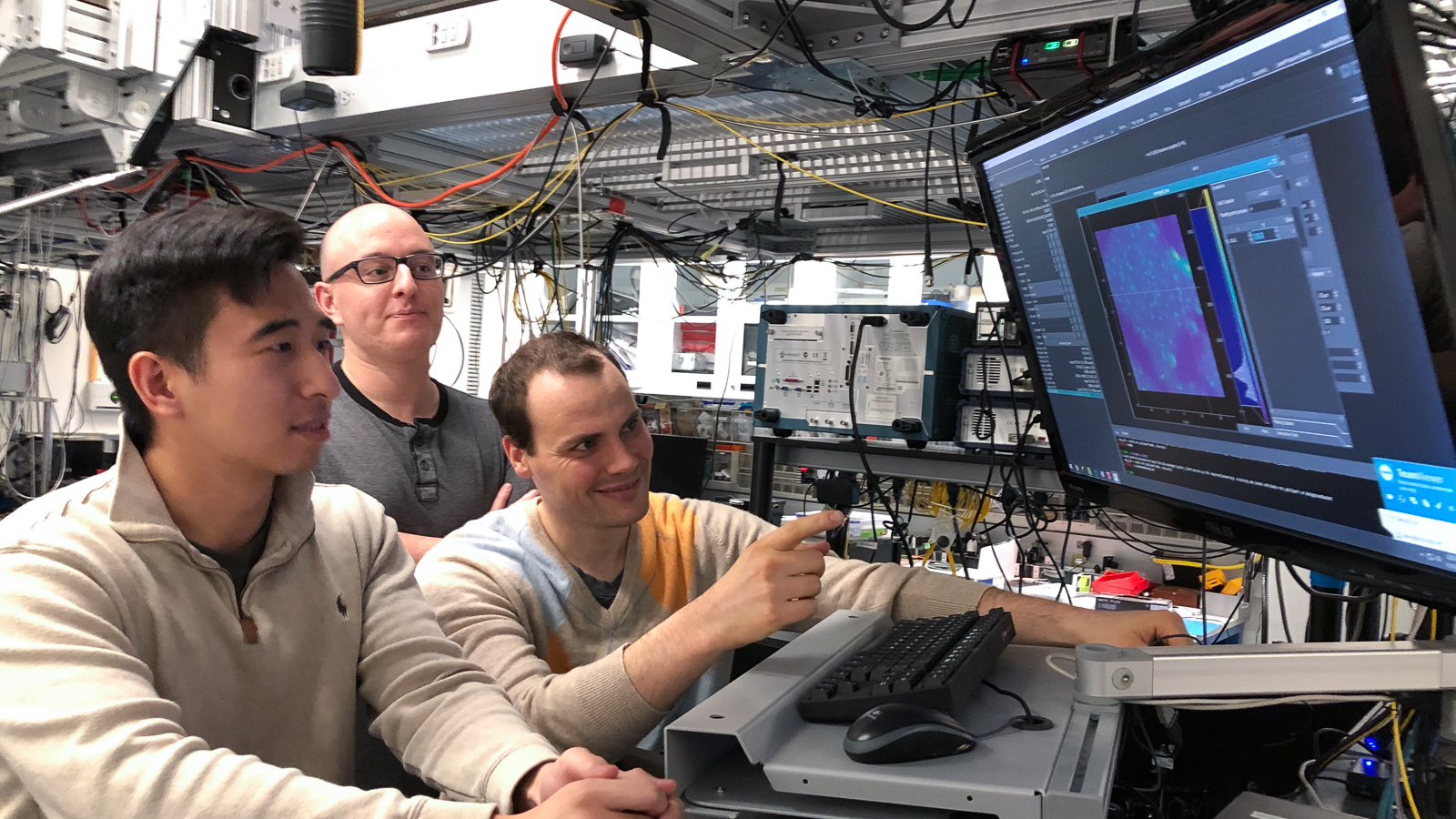
UChicago scientists discover way to make quantum states last 10,000 times longer
Scientists discovered a simple modification that allows quantum systems to stay operational 10,000 times longer than previous systems.

New type of taste cell discovered in taste buds
Our mouths may be home to a newly discovered set of multi-tasking taste cells that—unlike most known taste cells, which detect individual tastes—are capable of detecting sour, sweet, bitter and umami stimuli.